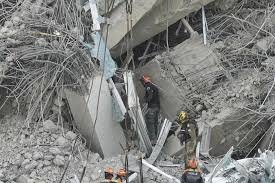
The death toll from Myanmar’s devastating 7.7-magnitude earthquake has climbed to 3,085, with search and rescue teams recovering more bodies nearly a week after the disaster struck, the country’s military-led government announced on Thursday.
According to officials, 4,715 people have been injured, and 341 remain missing as the earthquake, which struck near Mandalay, Myanmar’s second-largest city, continues to impact communities. The massive quake toppled thousands of buildings, collapsed bridges, and left roads impassable across multiple regions.
Casualties May Be Much Higher
Local media have reported significantly higher casualty figures than the official count. With telecommunication networks down and many remote areas still unreachable, the actual number of deaths and injuries could increase sharply as more information emerges.
The World Health Organization (WHO) revealed that at least four hospitals and one health center were completely destroyed, while 32 hospitals and 18 health centers suffered partial damage.
“With infrastructure compromised and patient numbers surging, access to health care has become nearly impossible in many of the worst-hit areas,” the United Nations said in a statement. Thousands of survivors require urgent trauma care, surgical interventions, and treatment for disease outbreaks.
To aid victims, a mobile hospital from India and a joint Russian-Belarusian medical unit have been set up in Mandalay.
Survivors Seek Shelter as Temperatures Soar
With homes reduced to rubble and aftershocks continuing, thousands of people are living outdoors in sweltering conditions. Relief workers in Naypyitaw, Myanmar’s capital, have set up large tents in open fields to shelter those displaced by the quake.
Before the disaster, Myanmar was already in the grips of a severe humanitarian crisis due to ongoing civil conflict following the military’s takeover in 2021. The United Nations had estimated that more than 3 million people were displaced, and nearly 20 million were in urgent need of humanitarian aid before the quake struck.
Temporary Ceasefire Amid Concerns Over Aid Access
Fearing that fighting between the military and armed resistance groups could hinder aid distribution, Myanmar’s military government announced a ceasefire until April 22. However, it warned that it would take “necessary measures” if opposition forces used the ceasefire to regroup or attack.
Despite the truce, local reports from Kachin state suggest that military operations have continued in several areas, though these reports remain unverified. Kachin, which has seen frequent clashes between the military and the Kachin Independence Army, was affected by the earthquake, but no major damage has been reported in the region.
Bangkok Skyscraper Collapse: Search for Survivors Continues
The earthquake’s impact extended beyond Myanmar, with Bangkok, Thailand, also experiencing devastation. A skyscraper under construction collapsed, prompting an ongoing search for survivors. Thai Governor Chadchart Sittipunt confirmed that possible sounds of life were detected in the rubble, raising hopes of a miraculous rescue. However, as of more than 144 hours after the earthquake, no survivors have been found.
As Myanmar grapples with the immense destruction and humanitarian crisis, rescue efforts continue, but the full scale of the disaster remains uncertain.
Sources By Agencies


